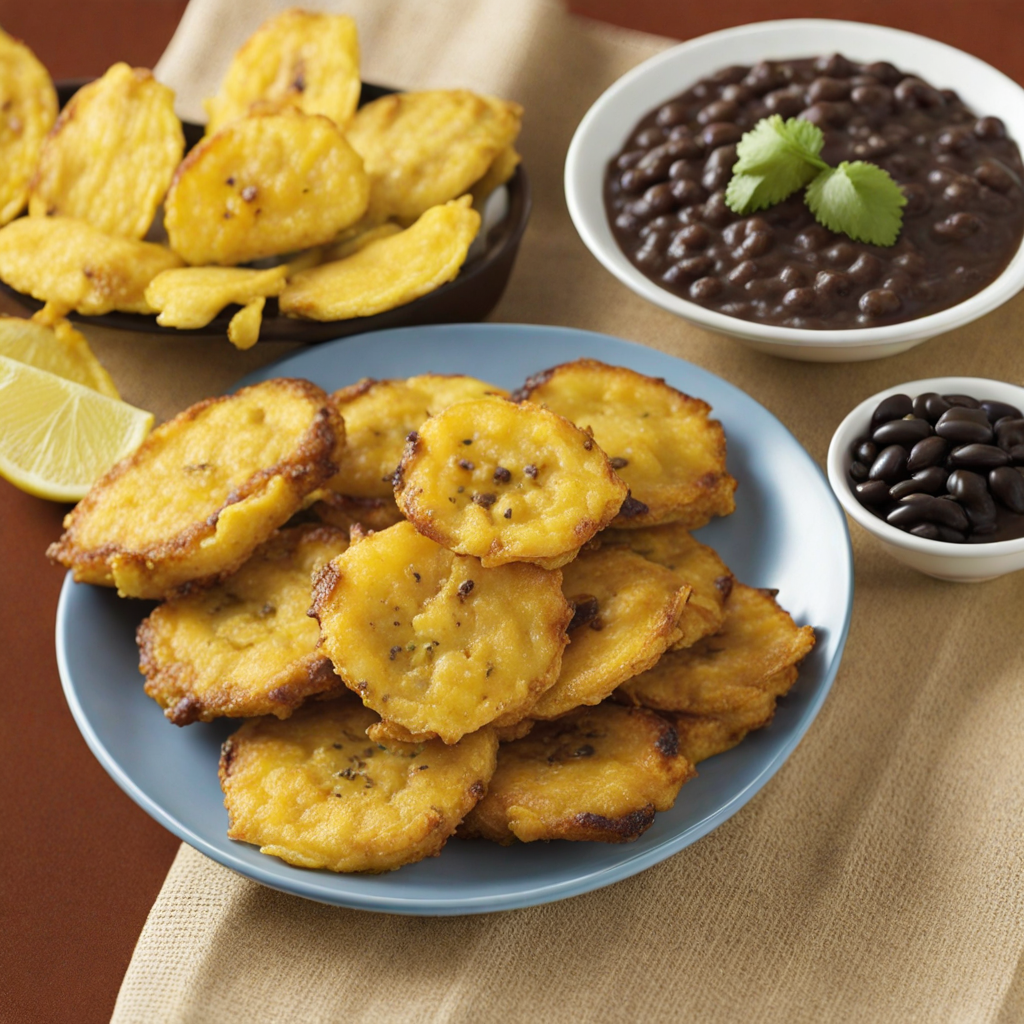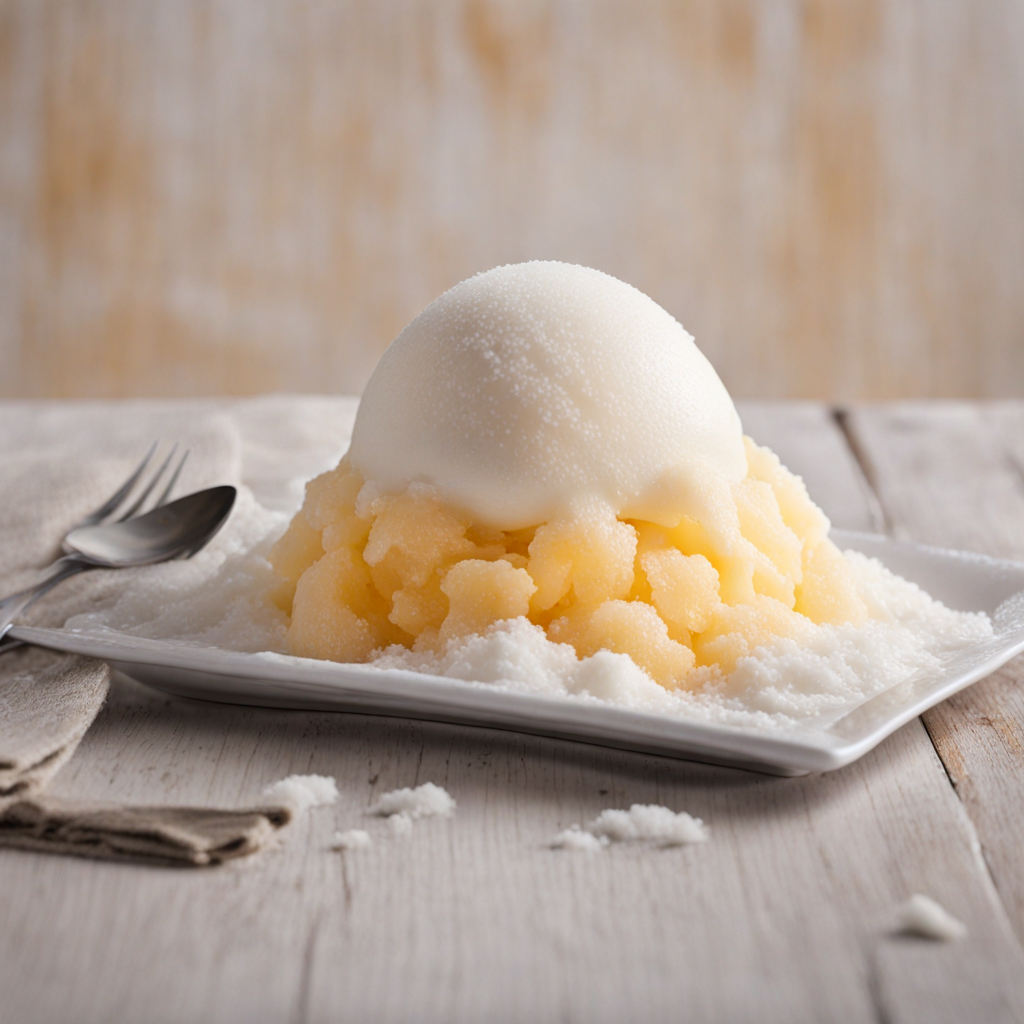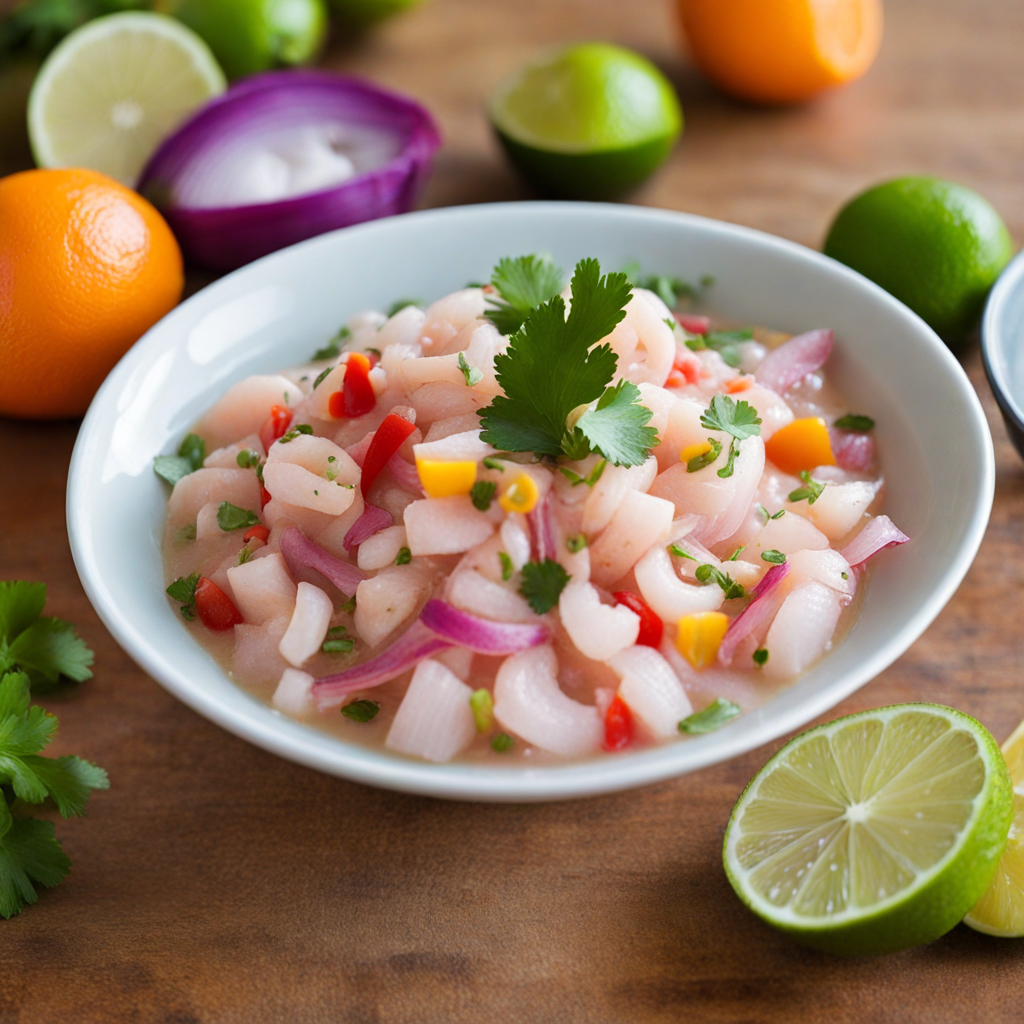Patacones
Patacones, also known as tostones in some regions, are a beloved traditional dish from Costa Rica that showcases the vibrant flavors of the tropics. Made primarily from green plantains, these crispy delights are prepared by first frying slices of the unripe fruit until they are golden brown and soft. Once cooked, the plantains are removed from the oil, smashed into discs, and then fried again until they achieve a satisfying crunch. The result is a double-fried snack that boasts a delightful texture, offering a combination of crispiness on the outside and a tender, starchy center that is irresistibly satisfying. The flavor profile of patacones is subtly sweet and savory, making them a versatile accompaniment to a variety of dips and toppings. Traditionally, they are served with a sprinkle of salt, enhancing their natural flavor, but many enjoy pairing them with guacamole, pico de gallo, or a tangy salsa. Some variations include adding a dollop of refried beans or shredded meat on top, transforming them into a more substantial dish. The possibilities for customization are endless, allowing each diner to experience patacones in a way that suits their taste preferences. In Costa Rica, patacones are often enjoyed as a snack, appetizer, or side dish during meals, making them a staple in both home kitchens and restaurants. Their crunchy texture and delicious flavor make them a perfect companion for a cold beverage, and they’re commonly found at local eateries and roadside stalls. Whether you’re enjoying them at a beachside café or a family gathering, patacones offer a taste of Costa Rica’s culinary heritage and a chance to explore the rich, tropical flavors that define the region.
How It Became This Dish
Patacones: A Culinary Journey Through History and Culture in Costa Rica Patacones, also known as tostones in many parts of Latin America and the Caribbean, are a beloved culinary delight that has become a staple in Costa Rican cuisine. This dish, made from green plantains that are fried, smashed, and fried again, boasts a rich history intertwined with the agricultural practices, cultural exchanges, and culinary innovations of the region. The origins of patacones can be traced back to the indigenous peoples of Central America, particularly the Taino and Arawak tribes, who cultivated plantains and used them in various forms long before the arrival of European colonizers. Origins and Early History The history of patacones is deeply rooted in the agricultural practices of indigenous communities in Central America and the Caribbean. The plantain, a starchy banana variety, was cultivated by these peoples for centuries. When Christopher Columbus arrived in the Caribbean in 1492, he encountered the Taino people, who had been using plantains as a staple food. The introduction of plantains to Europe and other parts of the world followed, thanks to the Columbian Exchange, a complex process of cultural and agricultural exchange that occurred after European contact. As European colonization spread through the Americas, so too did the culinary techniques associated with plantains. The dish that would evolve into patacones became common in various regions, each putting its unique spin on the preparation. In Costa Rica, the use of green plantains in a twice-fried format became popular due to its delightful crunch and versatility, allowing it to accompany a variety of dishes. Cultural Significance Patacones hold a special place in Costa Rican culture and cuisine. Beyond being a delicious snack or side dish, they are emblematic of the country’s agricultural roots and culinary traditions. In Costa Rica, where agriculture plays a vital role in the economy, the cultivation of plantains is significant. The country’s favorable climate allows for the year-round growth of this crop, making it accessible and affordable for many families. In Tico (Costa Rican) households, patacones are often served during family gatherings, celebrations, or casual get-togethers. They are commonly enjoyed as a side dish alongside typical foods such as gallo pinto (a rice and bean dish), grilled meats, or ceviche. The act of preparing patacones often brings families together, creating a communal experience that reinforces social bonds and cultural identity. Moreover, patacones have transcended their humble origins to become a culinary symbol of Costa Rican cuisine. They are frequently featured in restaurants and eateries across the country, showcasing the significance of local ingredients and traditional cooking methods. Their adaptability allows for endless variations, with toppings ranging from garlic and salt to cheese or avocado, making them a versatile option that appeals to a wide range of palates. Development Over Time Over the years, patacones have evolved in both preparation and presentation. Traditional methods of making patacones involve frying the green plantains in hot oil until they are tender, followed by smashing them flat and frying them again until golden brown and crispy. However, modern culinary practices have introduced different cooking techniques, such as baking or air frying, to accommodate health-conscious consumers seeking lighter alternatives. The advent of globalization and the fusion food movement has also influenced the development of patacones. Chefs and home cooks alike have experimented with various toppings and fillings, creating unique interpretations of the classic dish. For instance, in some regions, patacones are topped with pulled pork, shrimp, or even sushi-inspired ingredients, reflecting the culinary diversity that exists in contemporary Costa Rican cuisine. Additionally, the rise of food tourism has brought more attention to traditional dishes like patacones. Visitors to Costa Rica often seek out authentic culinary experiences, and patacones are frequently highlighted in food tours and cooking classes. This exposure has led to a resurgence in appreciation for traditional recipes and cooking techniques, as both locals and tourists alike rediscover the joys of this simple yet satisfying dish. Patacones in the Global Context While patacones are deeply rooted in Costa Rican culture, they are not unique to the country. Variations of the dish exist throughout Latin America and the Caribbean, each with its own regional flair. In Colombia and Venezuela, for example, tostones are often served with hogao (a tomato and onion sauce) or as a base for various toppings. In Puerto Rico, the dish is known as tostones and is similarly popular, often served with seafood or as part of a mofongo dish. This cross-cultural exchange has enriched the culinary landscape of the Americas, allowing for the sharing of flavors and techniques that continue to evolve. As the world becomes increasingly interconnected, dishes like patacones serve as a reminder of the intricate web of cultural influences that shape the food we eat. Conclusion In summary, patacones are more than just a delicious snack; they are a culinary symbol of Costa Rican heritage and identity. From their origins among indigenous peoples to their modern interpretations in a globalized world, patacones have stood the test of time, evolving while retaining their cultural significance. As Costa Ricans continue to celebrate their agricultural roots and culinary traditions, patacones will undoubtedly remain a cherished part of their gastronomic landscape. Whether enjoyed at a family gathering, a local eatery, or as part of a culinary adventure, patacones represent the heart and soul of Costa Rican cuisine—a testament to the enduring power of food to connect people across generations and cultures.
You may like
Discover local flavors from Costa Rica







